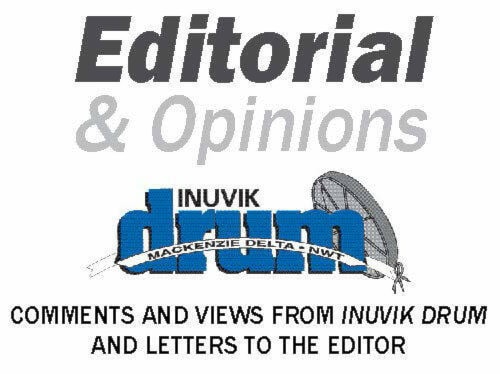This last week we learned the Inuvik Wind Project is nearly $30 million over budget and likely growing, due to a surge in the costs of goods brought about by a series of unfortunate geopolitical events.
It’s a significant cost overrun, but one that all parties involved could have done very little to change. While inflation is a time-honoured and effective tool for political opportunists to use to work their flocks into a fury, the reality of the matter is none of the blame for this can be cast on the GNWT, the Gwich’in Tribal Council, the federal government or even the contractors involved in the project. The closest decisions we can see in hindsight that would have affected anything would be folding over to appease Vladimir Putin’s imperial ambitions and letting Covid-19 run rampant, both of which would have likely resulted in a far worse situation than the current increase in the cost of infrastructure.
All that being said — for a cash-strapped GNWT, $30 million is a lot of money. Especially when you factor in the other major costing issues, particularly the nursing crisis at Stanton Hospital in Yellowknife. As much as inflation is a regular fact of life, it’s still one we can’t afford. In response to all this, the GNWT is doing the only thing it can do — try to squeeze more blood out of the stone that is Ottawa.
Justin Trudeau’s Liberals have been very enthusiastic about funding projects in the North — NWT MP Michael McLeod is announcing a new funding package almost weekly. But in spite of the hundreds of millions of dollars Ottawa has committed to making life in the North better, it’s still not enough.
Ultimately, the northern territories are hampered by their less-than-provincial status. In the last federal election, the Conservative party had promised it would let the NWT set its own debt limit, but as it currently stands, the NWT has a limit of $1.8 billion it can accumulate in debt annually. This is substantially higher than our neighbours — even-more isolated Nunavut maxes out at $750 million and Yukon, with the economic boon of bridging Alaska to Alberta, is able to borrow $800 million. Whether these numbers make sense to the situations each territory finds itself in, collectively the three of us can raise a maximum of $3.3 billion — which sounds like a lot until you remember basic infrastructure projects can skyrocket in cost even when everything is done properly. Similarly, the situation at Stanton Hospital shows that attracting people to fill essential services is expensive enough, but getting people to stay long-term in a service-rich city like Yellowknife is next to impossible under the current circumstances, never mind getting long-term talent to stay in a place like here in Inuvik, where there isn’t even so much as a sit-down coffee shop.
Sustainable long-term growth is impossible as long as the North remains the territorial possession of the federal government. There simply is not enough capital available to kickstart any development, and cutting corners for international resource companies to try and recreate the Fort McMurray experience isn’t going to work either. It’s time the federal government elevates the North to a full membership in confederation.
